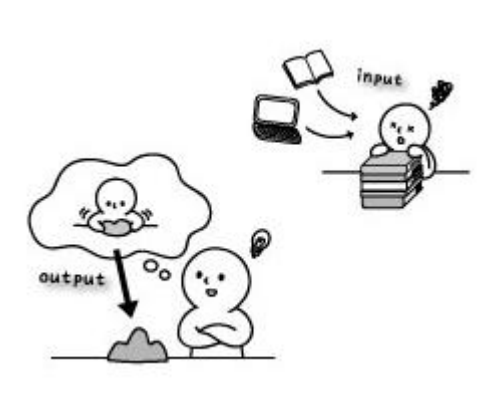Output-Driven Learning/OG
| Output-Driven Learning | |
| Contributors | Takashi Iba, Toko Miyake, Miyuko Naruse, Natsumi Yotsumoto |
|---|---|
| Last modification | May 16, 2017 |
| Source | Iba, Miyake, Naruse & Yotsumoto (2009)[1]; Iba (2010)[2] |
| Pattern formats | OPR Alexandrian |
| Usability | |
| Learning domain | |
| Stakeholders | |
When you are studying
When you choose classes or seminars
When you want to learn a new skill
When you want to improve your skill
When you have no idea what to do
When you begin to research after you input the knowledge, you have to study at random and do not know what knowledge or skills you need.
- • People become aware of their limitations by creating or practicing something.
- • Learning can be motivated by the need to achieve what people really want to do.
- • “Trial and error” is important process of making an output.
- • To create something is nothing less than to express themselves, because it is inevitable to select a way from many other possibilities with their own tastes and thoughts.
Accumulating knowledge and Improve your skill in the use of them.
- • Be in the situation of making an output and work on hard
- • Improve your skill in the process.
- • Evaluate your output from the objective standpoint and also others' feedback.
- • Reflect back upon the process, and think what knowledge or skills you should learn more. Then, make the future works better.
You can realize your present state. It tells you what you need to do for the next.
Hakase wanted to be a programmer but he was tired of normal boring practicing. One day he came up with the new idea of software and he started to build it. Hakase read many books to build the software as codes, algebra, and arts. Finally when he finished a simple software building, he had got an enough skill of programming. The output became a good tool to share his mind to others, and he was able to notice the skill which he had to learn next.
Output-Driven Learning (Output-Driven Learning) begins making an output, not getting an input of knowledge. In other words, it is to learn with Tornado of Learning (Tornado of Learning). For good practice of this pattern, you should consider an Appropriate Approach (Appropriate Approach) and learn what you need indeed. Output-Driven Learning (Output-Driven Learning) can be considered as a kind of Prototyping (Prototyping) for improving yourself. The key of Output-Driven Learning (Output-Driven Learning) is that it can bring about actual products, which can be a building block for Self-Producing (Self-Producing).
References
- ↑ Iba, T., Miyake, T., Naruse, M., & Yotsumoto, N. (2009).Learning patterns: A pattern language for active learners. In Proceedings of the 16th Conference on Pattern Languages of Programs (PLoP 2009).
- ↑ Patlet mentioned in Iba, T. (2010). Designing a Pattern Language for Creative Learners.
